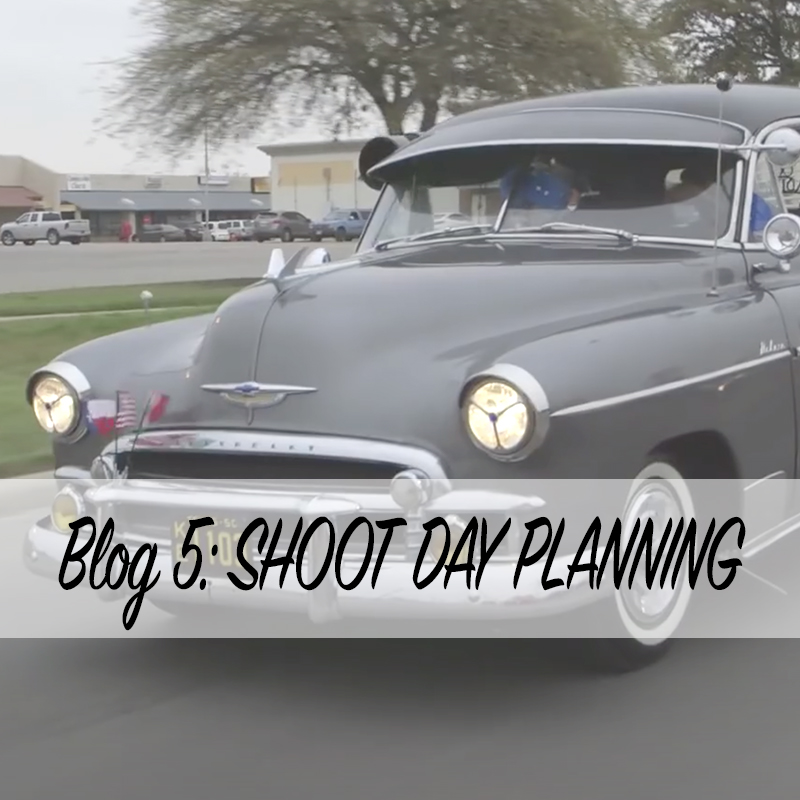Uncategorized
Video Learning Blog 5 – Shoot Day Planning
Now that we’ve covered the ideas of how to find a story, simple story boarding, shot lists, and many of the elements of the pre-production work that go into a well planned documentary video shoot – I thought I would take some time to show how we can use those tools to plan our actual shoot day.
The big idea here is that all of the planning we put in before the actual shoot day allows us to make sure we use our time effectively, everything runs smoothly, and all those involved are on the same page. It can be a challenge to keep it all together when you’re using the creative side of your brain, so planning is key.
Some Background
San Antonio, Texas is about as far away from Alaska – or even Oregon – as you can get. It’s actually further south than New Orleans. It’s also a majority Latino city. I knew that in travelling there, I would want to find a story that focused on a storyteller who could speak to his experience as a Latino – especially as one who grew up there.
Like in our previous example, we found our initial story idea by keyword searching old newspaper articles. The article we found, about a local car club, quoted a man who was also a spanish language teacher at a large San Antonio school. This seemed like a potential intersection between two different topics that were of interest to us: language as it relates to culture – and a completely different type of cultural tradition – in this case cars.
Here is a link to the original article, which I found on google again – to give you a sense of what we had to work from initially.
The Story Board Guides the Shoot Plan
Before I could formulate my plan for the day, I knew I needed to do the pre-production work of generating a story board. But, beyond being my plan for the video I would edit, I could also use this to budget time and communicate that information to our storyteller.
The story board for this video is very simple, broken down into just a few scenes:
– Opening shots of San Antonio
– Students leaving the school, after class is dismissed
– Inside the teacher’s classroom
– Teacher grading papers, preparing to leave for the day
– Teacher driving home
– Teacher returns home, enters the garage
– Starting up the lowrider cars
– Driving in the car(s)
– Working on the cars with his son
In this case, the order of scenes ended up being pretty linear – meaning we could shoot them in the order they would appear in the video. We could start at the school, at the end of the day. After the students left, we could have access to the classroom – and then just follow our teacher on his commute home. From there, we could capture the remaining scenes that focused on the car, his family, etc.
By providing this basic information to the documentary subject ahead of time, we were able to clearly communicate the plan, without getting too “in the weeds” about details, and help us both work together to budget our time for the project. The plan, with time budgeting might look like this:
2:00 – 2:30 – Opening Shots of San Antonio
2:45 – 3:00 – Students leaving the school
3:15 – Meet up in the classroom with teacher
3:30 – 4:00 – Teacher grading papers, preparing to leave for the day
4:00 – 4:15 – Teacher driving home
4:30 – 5:00 – Starting up the lowrider car, footage of the garage
5:00 – 6:00 – Driving the car(s) / Working on cars with son
As you might imagine, not all videos will be totally linear in their final edited form. But, that doesn’t mean you can’t plan your shoot to be linear. All you would need to do is shuffle some of the scenes into a different order – generally with an eye for efficiency.
Another thing to note – especially when traveling – is what time the sun comes up and goes down. In most professional shoots, these times are actually printed on all the planning materials – like the “call sheet” that informs everyone when to arrive, what time to leave, etc. If you’re afraid you’ll run out of time and light, that can change your plans. This video was shot in mid March, so sunset was about 7:30 PM. Plenty of time.
What About the Interview?
The next post will focus on one last element of pre-production – planning the interview. I will go into some of my theory on how to structure that experience for the storyteller and yourself. In the case of all the videos we’ve watched, including this one, the interview happens after all of the primary shooting is complete. This is very intentional.
While I had prepared a list of questions well before the shoot, by choosing to interview after we shot the primary video, I had a better sense of who the storyteller is (we never met before this), and had a chance to adjust my questions to better fit his story. In addition, and probably most critically, I was able to build a rapport and some trust with him. Putting in this work before the interview ensures a more comfortable, candid and meaningful interview for everyone.
For a short form video like this, I would simply tell the storyteller to plan for about an hour after the shooting is complete for the interview. It might take longer than that, with set up and tearing down the gear – but, that is a good target.
Unforeseen Wrenches in the Gears
I chose to highlight this video as a way to talk about the importance of planning and communication, partly because of went wrong BEFORE the shoot.
After our initial contact, and sharing my plan, I felt like everything was “go”. The teacher talked to his principal – everyone liked the idea. But, on the day before the shoot, I received an email from the school district. It seems the chain of command was longer than I initially thought.
While the shoot was slated to start at about 2:30 PM – I actually spent from 8 AM to about 2 PM that day talking to the school district, meeting with the Chief Communications Officer, providing proof of insurance, going over my plans, and signing documents I didn’t really have a chance to read.
Had I not had all of my plans clearly laid out – as well as a strong idea of what the story would look like – I doubt that it could have happened at all.
A Quick Exercise
As you think about your story ideas – try to think about the things that could go “wrong”. If you choose one person to be the storyteller, will there be others who feel slighted? Who might disagree or offer a different point of view?
It’s never good to be secretive about the work you’re doing, even unintentionally. Sometimes, part of the pre-production is talking to more people than you initially thought you would. That doesn’t mean you give the controls to other people, though. But, if there is potential opposition or differing points of view – what can you learn from them?
An important lesson on top of all that is this: Sometimes it’s good to ask permission. Sometimes it’s not. This is where your experience and connection to your own community will pay off, and why you are the right person to be telling these stories.

